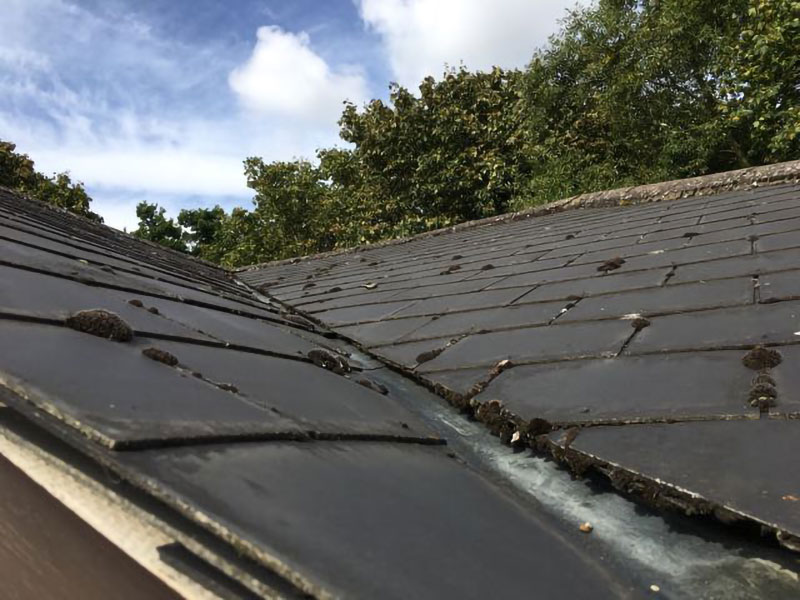Asbestos Removal Equipment Used In Sydney Risks Associated With Asbestos Roofs
Asbestos disposal regulations play an important role in safeguarding public health and the environment. As asbestos is a extremely hazardous material, correct disposal is important to mitigate the risks related to exposure. These regulations are designed to manipulate how asbestos is dealt with, transported, and disposed of to ensure that it does not pose a menace to human health or the ecosystem.
The first step in understanding asbestos disposal regulations includes recognizing the nature of asbestos itself. This naturally occurring mineral has been broadly used in building and industrial purposes because of its warmth resistance and sturdiness. However, its fibers can turn into airborne, resulting in severe health issues corresponding to lung cancer, asbestosis, and mesothelioma. As a end result, regulations are stringent, masking every facet from extraction to disposal.
In many regions, disposal regulations are not only ruled at a federal degree but in addition at the state and local ranges. Agencies such as the Environmental Protection Agency (EPA) in the United States have established guidelines relating to the disposal of asbestos waste. These regulations outline how to classify and manage asbestos-containing materials (ACMs), detailing what constitutes hazardous waste.
Prior to disposal, asbestos have to be properly identified and categorized. This requires inspections and sampling by qualified professionals. Once an ACM is recognized, strict protocols have to be followed to ensure that its disposal is in compliance with regulatory requirements. This consists of using specialized containers designed to stop the release of asbestos fibers into the air.
Asbestos Roof Removal Timelines And Schedules Cost To Remove Asbestos Garage
Transportation of asbestos waste additionally falls under stringent guidelines. Only licensed waste transporters are permitted to handle and transfer these hazardous materials. These transporters must comply with particular procedures to make certain that the asbestos remains contained and does not pose a risk throughout transport. Improper handling throughout this phase can result in accidents or unintended exposure, highlighting the importance of adherence to regulations.
Once the asbestos waste reaches its destination, it should be disposed of at permitted landfills or remedy facilities geared up to handle such hazardous waste. These facilities are specially designed to isolate asbestos to prevent it from contaminating surrounding environments. Furthermore, regulations stipulate that these sites are regularly monitored for compliance, making certain that they effectively comprise the materials.
For residential and commercial initiatives involving asbestos, regulations require proper notification procedures. Property homeowners or contractors must inform related authorities prior to any renovation or demolition actions that may disturb asbestos. This requirement is crucial to enlist the mandatory oversight and help mitigate risks related to exposure to airborne fibers.
Regulations also tackle workers’ safety in the course of the handling and disposal of asbestos. Training and certifications are mandated to guarantee that staff are educated about the risks and are outfitted with the correct safety gear. This emphasis on worker safety underlines the multifaceted nature of asbestos disposal regulations, extending the protection measures past simply most of the people.
Asbestos Roof Disposal Regulations In Sydney Find A Licensed Asbestos Removalist
Non-compliance with asbestos disposal regulations can lead to extreme penalties. Fines and legal actions could also be imposed towards people or organizations violating these regulations - Safe Asbestos Roof Removal Techniques. Moreover, the failure to stick to disposal standards can lead to environmental contamination, which can require costly clean-up efforts and further regulatory scrutiny

Despite the stringent nature of these regulations, challenges remain. Some property owners may attempt to cut costs by taking shortcuts throughout disposal, which might directly endanger public health. Recent incidents have highlighted the importance of increased oversight and community awareness regarding asbestos disposal.
Another vital aspect of asbestos disposal is the position of public schooling. Impact Of Weather On Asbestos Roof Removal. Without proper awareness, people could engage in hazardous activities, similar to eradicating asbestos from buildings with out sufficient protective measures and permissions. Community programs aimed at informing citizens in regards to the dangers of asbestos and best practices for disposal can tremendously enhance safety

The evolution of asbestos disposal regulations reflects ongoing research into the health impacts of asbestos exposure. As scientific understanding grows, modifications in regulations might occur to tighten controls or adapt to new findings. Keeping abreast of these developments is important for contractors, property house owners, and waste management entities alike.
Community Awareness About Asbestos Roof Dangers What To Do If You Find Asbestos
Asbestos disposal regulations are an important framework designed to guard each public health and the environment. Compliance with these regulations permits the safe dealing with and disposal of this dangerous material, thereby reducing the potential for exposure. As awareness and schooling initiatives continue to evolve, they play a pivotal position in safeguarding communities from the hazards related to asbestos.
Effective management of asbestos waste requires collective efforts from regulatory businesses, industry professionals, and the public. By adhering to established protocols and promoting awareness, the risks associated with asbestos may be considerably mitigated.
Environmental Restoration After Asbestos Removal Commercial Roofing Contractor For Removal
Ultimately, the ongoing implementation and enforcement of asbestos disposal regulations are essential for sustaining both environmental integrity and public health.
- Proper identification and assessment of asbestos-containing materials (ACMs) are required prior to disposal to make sure compliance with regulations.
- Licensed waste carriers have to be enlisted to transport asbestos waste, guaranteeing that they adhere to local and national legal guidelines governing hazardous materials.
Preventing Asbestos Contamination During Roof Work Commercial Roofing Contractor For Removal
- Disposal websites for asbestos have to be specially designated and outfitted to deal with hazardous waste, offering enough safety measures for staff and the environment.
- Documentation of the whole disposal process, together with manifest types and waste monitoring, is crucial to verify compliance and for potential future audits.
- Asbestos waste have to be securely packaged in permitted containers labeled with hazard warnings to stop accidental exposure during transit and disposal.
Asbestos Roof Removal Machinery And Tools Risks Associated With Asbestos Roofs
- Local authorities could impose specific regulations that augment national guidelines, requiring businesses to stay knowledgeable about their regional legal guidelines.
- Training and certification for personnel dealing with asbestos waste are mandatory, specializing in safe dealing with practices and emergency response procedures.

- Controlled demolition procedures have to be employed when eradicating ACMs, minimizing airborne fibers and guaranteeing safe disposal.
- Public notifications may be a requirement in some jurisdictions to inform close by residents about asbestos removal and disposal activities.
Risk Communication Regarding Asbestos Removal Diy Awareness For Asbestos Removal
- Regular audits and inspections of waste disposal practices help Extra resources preserve adherence to regulations and asbestos roof removal waste management promote continuous improvement in safety protocols.
What are the first regulations governing asbestos disposal?undefinedAsbestos disposal is primarily regulated by the Environmental Protection Agency (EPA) in the U.S., which outlines specific guidelines for handling, transporting, and disposing of asbestos-containing materials (ACMs) to make sure public safety and environmental safety.
How should I prepare asbestos materials for disposal?undefinedBefore disposal, asbestos materials ought to be wet down to reduce mud and sealed in leak-tight containers or bags. It's essential to label them correctly as containing asbestos and observe native regulations for safe handling.
Where can I get rid of asbestos waste?undefinedAsbestos waste ought to be taken to a licensed landfill designated for hazardous waste. It's essential to envision native waste management facilities as not all landfills accept asbestos materials.
Asbestos Removal Equipment Used In Sydney Asbestos Storm Damage Services
Do I want a permit to get rid of asbestos?undefinedMany regions require a permit for the disposal of asbestos to ensure compliance with safety regulations. Check together with your native environmental company for particular requirements in your space.
What are the implications of improper asbestos disposal?undefinedImproper disposal of asbestos can result in important health risks and legal penalties. It may result in environmental contamination and potential exposure to asbestos fibers, which can cause serious health points, together with lung diseases.
Can owners get rid of asbestos themselves?undefinedHomeowners are typically discouraged from disposing of asbestos themselves due to the health risks and strict regulations concerned. Hiring licensed professionals ensures safe dealing with and compliance with legal requirements.
How a lot does it cost to get rid of asbestos?undefinedCosts for asbestos disposal can range broadly based mostly on factors similar to location, the amount of asbestos, and the disposal method. On average, it could range from hundreds to 1000's of dollars, relying on native rates and contractor fees.
Asbestos Roof Removal Service Reviews And Feedback Costs Associated With Removal And Replacement
Are there particular training requirements for dealing with asbestos?undefinedYes, individuals involved within the removal and disposal of asbestos should comply with OSHA regulations, which often require particular training and certification to ensure safety practices are followed.
What paperwork do I want for asbestos disposal?undefinedYou may need to provide documentation showing that the asbestos was disposed of in accordance with native, state, and federal regulations. This can embrace manifests or disposal receipts from licensed facilities.